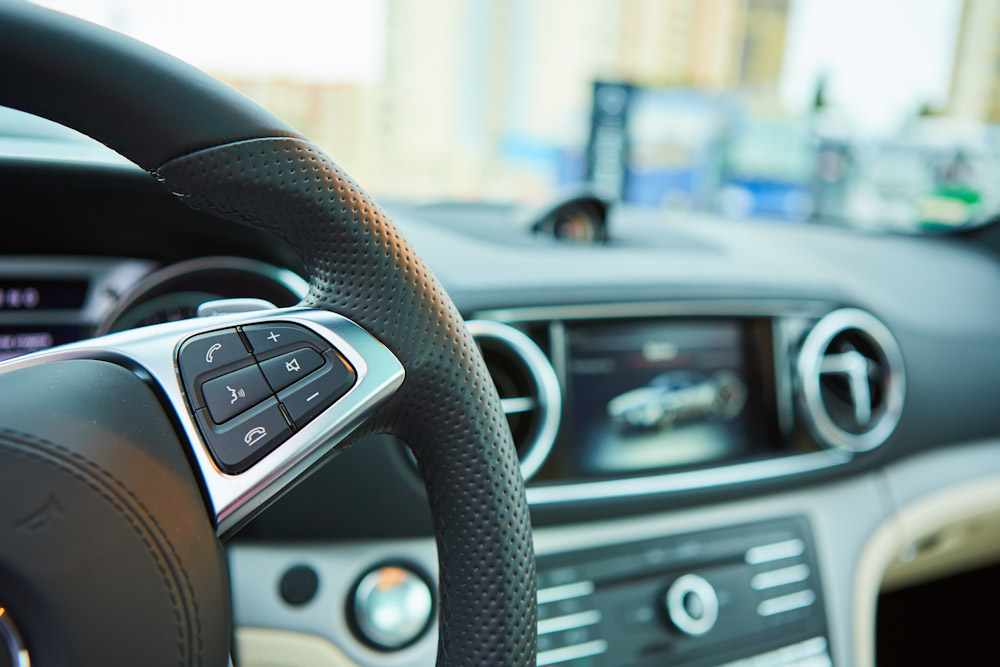
When speaking about their cars, gearheads have been known to refer to them in familial tones; “it’s my baby,” “She’s my pride and joy,” “This car is a part of me.” While much of this could be chalked up as simply excitement over the beauty of its design or the precision of its craftsmanship, from a metaphorical point of view perhaps referring to a car in this way isn’t entirely uncalled for.
After all, a car is a marvel of engineering, a machine that runs on various interconnected systems with fluid that is pumped through pipes and fuel lines all throughout the chassis, not unlike the human body. Each of the eight types of fluid is connected to an essential function that ultimately makes our task as drivers easier.
The Turn of the Wheel
Perhaps no system is better at illustrating this fact than your vehicle’s power steering. While other systems spare you from having to visit the car repair shop as frequently, the power steering offers a service that you can literally feel.
Without the power steering engaged, you would find yourself having to significantly pull on the steering wheel in order to turn, merge, or otherwise move the car. Why is this? There are many reasons why a car’s steering system can seem unyielding, including:
- The viscosity of the power steering fluid
- A problem with the power steering pump
- Cracked or damaged components within the steering column
Ultimately, without the power steering system working optimally, it is very difficult to turn a machine that is many thousands of pounds in weight, especially at high speeds. Any problems that present themselves to the steering system are a danger to every individual on the road and should be looked at by one of our West Valley car repair technicians.
How It Works
As we’ve seen, if there’s a problem with the power steering system, the issue will be quickly felt by the driver. Knowing how the system works will not only help you know how soon you need to visit a Master Muffler but can help you understand what the problem is once it’s discovered by our team.
Hydraulic Pump
For most of the time that it has been a feature in non-luxury vehicles, power steering has been achieved via hydraulic pressure from fluid being pushed through a rotary by a pump. The pump is fitted with a belt that spins in accordance with the engine’s power.
- The rotary is like a small turnstile entrance like you might find in a hotel.
- It lets in fluid at low pressures and then pushes it out at high pressures as it spins.
- The pump has processes in place to regulate the flow of fluid if the engine is idle or, conversely, running at higher speeds.
Like all components that require the use of a belt, it is important to bring your car in to our West Valley car repair professionals for regular tune-ups to ensure the belt is still performing at the highest integrity.
Rotary Valve
The rotary valve’s main function is to sense the force being applied to the steering wheel by the driver and to manipulate the torsion bar that’s connected to the driving wheels’ axel.
- As the driver twists the steering wheel, torque is applied to the torsion bar.
- The torsion bar mimics the amount of torque it is receiving thanks to the power steering fluid that is being let in from the rotary.
- The torsion bar passes that torque to the axel.
- That torque pushes or pulls the tires one way or the other, simultaneously, to turn the car.
The rotary valve can be connected to the axel or directly to the steering column where the wheel is; the effect is the same.
Whether you’re driving a car that utilizes power steering fluid or you have an electric steering assistant that accomplishes the same result, the team at the West Valley Master Muffler has the experience necessary to complete any car repairs you might need. Drop on by today if you suddenly need to exert a lot more muscle to get your vehicle turned.
Related Posts
Key Takeaways On average, passenger vehicle tires last 40,000 to 60,000 miles, depending on type, driving habits, and maintenance. Replace tires when tread depth reaches 2/32”, if damaged, or older than 10 years. Regular rotation, alignment, and proper inflation extend tire life. Aggressive driving, poor roads, and harsh weather shorten tire lifespan. Take advantage [...]
When you think about car maintenance, you probably focus on oil changes, tire rotations, and maybe even brake pad replacement. But what about your brake fluid? If you’ve ever wondered, “What does brake fluid do?” or “Why is brake fluid important?”, you’re not alone. Brake fluid might not be the most talked-about part of [...]
Is that high-pitched squeal from your brakes driving you—and everyone else—crazy? Don’t ignore it. Squeaky brakes aren’t just annoying, they’re your car’s way of saying something needs attention. Whether you're cruising through Salt Lake City or winding up Idaho’s mountain passes, here’s what’s likely going on, how you can fix it, and when it [...]





